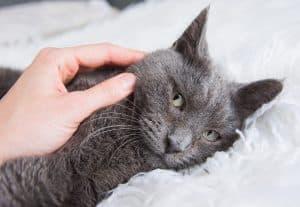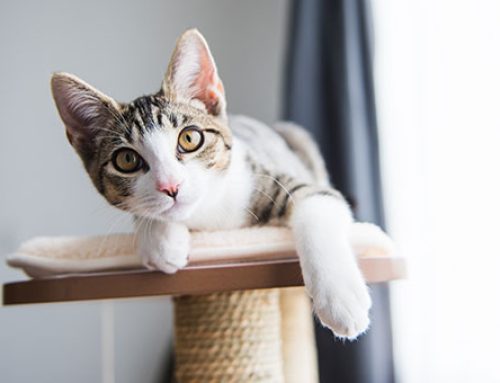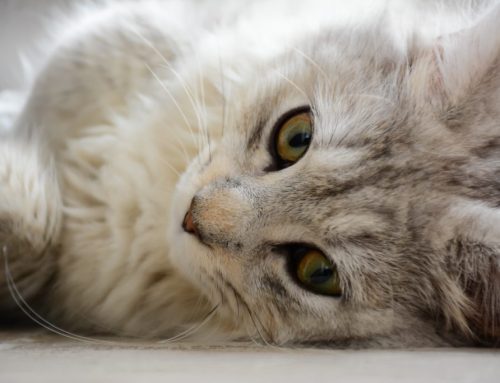Diabetes mellitus is a condition in which the body cannot properly produce or respond to the hormone insulin. This results in elevated levels of glucose, which is the main source of energy for the body.
The cells in a cat’s body need sugar (glucose) for energy, just like the human body does. Glucose in the blood requires insulin, a hormone produced by the pancreas, to facilitate the movement of the glucose into cells. Insulin attaches to cells and signals when the time is right to absorb glucose. By absorbing glucose, cells in fat deposits, the liver, and the muscles get vital fuel while lowering levels of glucose in the blood.
In Type I diabetes, glucose concentrations are high because of a decrease in the production of insulin. This type is very uncommon in cats. In the case of Type II diabetes, glucose levels are high because cells in the body do not respond appropriately to insulin. This type is most common in cats.
WHAT ARE THE SYMPTOMS OF DIABETES?
Risk factors for diabetes in cats include obesity, age (older then 8 years), physical inactivity, male gender, high carbohydrate diets and glucocorticoid (steroid) therapy.
Diagnosis of diabetes in a cat can be challenging because cats can have elevated blood glucose levels just from stress. Also, common clinical signs such as increased drinking and increased urination can be seen with other conditions, such as kidney disease and hyperthyroidism. Other symptoms include weight loss, increased or decreased appetite, and an abnormal stance.
HOW DO YOU DIAGNOSE DIABETES?
Diabetes is diagnosed by obtaining a blood and urine sample. Abnormally high levels of glucose in the blood and the presence of glucose in the urine would be observed. Often, the veterinarian may choose to submit a fructosamine blood test as well. The fructosamine level will indicate what the average blood glucose level has been over the past two weeks. A cat’s “stress response” does not typically affect these results.
HOW IS DIABETES TREATED?
Successful management of a diabetic patient is dependent upon communication between the owner and the veterinary team. The overall goal is to achieve diabetic remission.
For most cats, insulin is still part of the treatment plan. There are several different types of insulin available for cats and most cats will require twice daily injections. Please view this video to learn how to give an insulin injection. It is important to realize that since there are different types of insulin each type needs to be handled in a different way. Some insulin requires to be rolled, others require to be shaken. Please consult with your veterinarian on the proper way to handle your type of insulin. Dietary management is also very important. Cats fed a high protein and low carbohydrate diet have a better chance of achieving remission compared to cats fed a high fiber diet.

HOW DO YOU MONITOR GLUCOSE LEVELS?
Periodic checking of blood glucose levels is necessary, especially in a newly diagnosed patient. Monitoring can be performed at home with a glucometer specifically for cats and dogs. Your veterinarian would provide you with a blood glucose monitoring schedule. Please visit the AlphaTrak website for more information on how to use an at home glucometer. You can also view this video
Your veterinarian may also perform a 12-24 hour glucose curve, during which insulin is administered intermittently and blood glucose is measured to establish the type of insulin and dosing frequency that best controls blood glucose while avoiding inappropriately low blood glucose levels.
It is also important to monitor your cats weight and keeping a weekly log. You should also assess things such as:
- Is my cat eating a normal amount?
- How is my cat drinking (more or less than usual)?
- Is my cats behavior typical?
- Are you noticing more (or less) urine in the litterbox?
WHAT IF MY CAT RECEIVED TOO MUCH INSULIN?
If a cat receives too much insulin, it is possible for the blood sugar level to drop dangerously low.
If your cat has a very low glucose level you may notice:
- Weakness
- Lethargy
- Shaking
- Unsteadiness
- If a diabetic cat shows any of these signs it is important to take a blood glucose reading if you have a home monitoring device, and seek immediate veterinary attention.
In mild cases of hypoglycemia (low glucose) you may only observe wobbling, or a drunken walk. Always take a blood glucose reading if you are worried and offer your pet a meal. Low glucose is a medical emergency!
WHAT IS MY CATS PROGNOSIS?
Cats with well-controlled diabetes can live many years of high quality life. Some cats may lose their need for insulin treatments (termed “remission”), but even in these cases it is recommended that owners continue to monitor for the recurrence of clinical signs of diabetes and keep the cat on a low carbohydrate diet.
















Leave A Comment